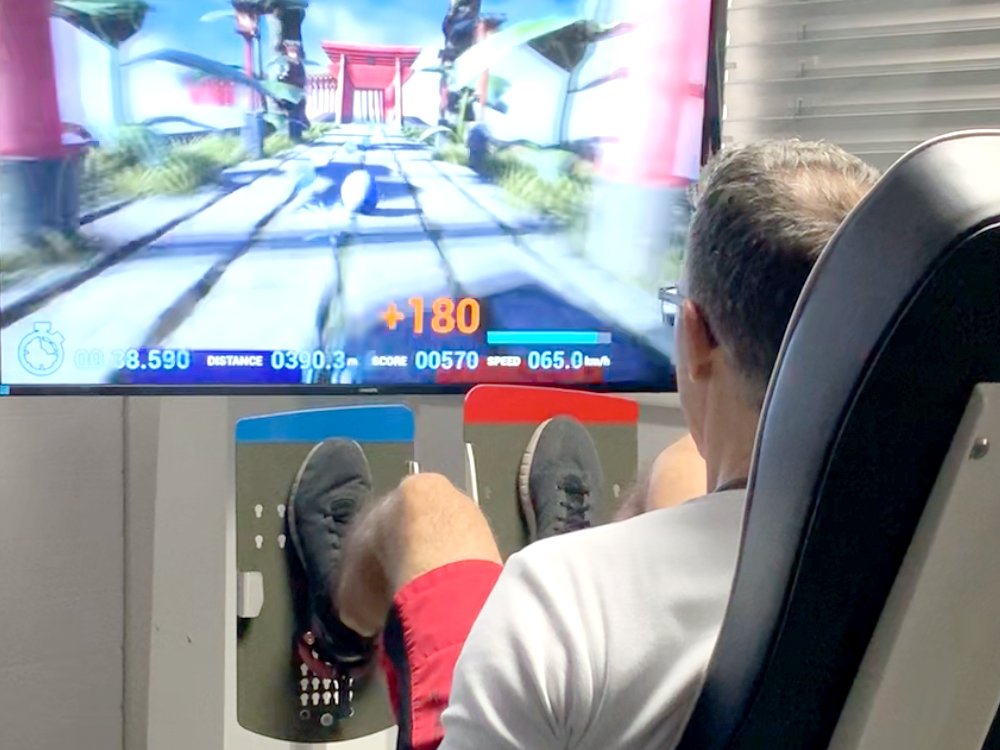It’s fun and motivating
As mobility and quality of life are so tightly interwoven, it stands to reason that strong and well coordinated legs lead to a better life. Right now, you’re probably thinking, “Easy peasy! I’ll just go to the gym a couple times a week, get strong legs and stay fit for the rest of my life.”
There’s only one small issue with this statement, and that’s a chemical called dopamine – a neurotransmitter produced by our brains that plays a major role in the control of pleasure and reward-motivated behavior. When something good but unexpected happens, such as a sudden encounter with an old friend, the brain responds by releasing dopamine. Even the anticipation of a positive experience that could happen in the future can release dopamine, resulting in our brain telling us to put in the work to get the associated reward (dopamine).
Fact is, most people do not really enjoy going to the gym and sweating it out. Motivation is a fickle thing and convincing people, including yourself, to exercise can be both time-intensive and costly – think hiring a personal trainer or a coach. So, we need to be smart about it and find a way to trick our brains into thinking that going to the gym is actually a “fun” activity. We need some kind of external stimulus, one that’s novel, exciting, and powerful. We need a stimulus potent enough to manifest itself into intrinsic motivation, turning duty to diversion and keeping you moving and working out, without having to think about it.
Enter game-based robotic personal training
Dynamic Devices is the innnovator behind the world’s first game-based robotic personal trainers. These robots combine real-time visual feedback, unprecedented dynamic control, and diagnostics facilities into motivating and effective neuro-muscular and neuro-cognitive training units. The user can select among dozens of intrinsically rewarding training and test protocols and generate thousands of unique training plans to optimize the interplay of four basic neuro-motor abilities: coordination, strength, power, and endurance. These plans are then personalized to the specific training goals and needs of each user in a matter of seconds.
Because the training units are game-based, they trigger the brain’s reward system. The guaranteed post-workout boost of dopamine exploits the user’s intrinsic pleasure and reward mechanisms to help them develop habits that will exert a deep positive impact on their mental and physical health. The creation and reinforcement of this positive feedback loop assists users in achieving and retaining levels of motivation that just cannot be replicated using conventional systems found at a conventional gym. In turn, this engagement helps users achieve their long term health and fitness goals.
Another really fascinating part of this story is that robotic personal training technology is not only geared towards helping people to stay healthier and retain their mobility. It can also be employed wherever the targeted combination of neuro-muscular and neuro-cognitive training is required: athletic training, injury prevention, healthy aging, back-to-sports scenarios, corporate well-being programs, and treatment of chronic health impairments of the central/peripheral nervous system or locomotor system.

